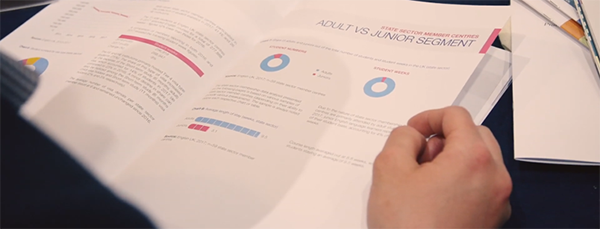
Full impact of Covid-19 on UK ELT highlighted in English UK's annual statistics
Our latest student statistics report show the pandemic had an even more devastating effect on the industry than previously believed.
In 2020, our member centres welcomed 83,446 full-time students, overall 83.6 per cent fewer than the previous year and with a 71.1 per cent drop in student weeks. Impact surveys carried out with a large sample of members had suggested a like-for-like 79 per cent decline in student numbers. In a reversal of recent trends, adults outnumbered juniors, with under-18s representing just 23 per cent of the student population.
We worked our usual insight partners BONARD to complete the annual statistical exercise i order to provide data for further lobbying for industry support and to provide a baseline for recovery plans.
Thanking members for submitting the figures "under the most difficult of circumstances," our chief executive Jodie Gray wrote:
"This report makes gloomy reading for everyone who cares about UK ELT, laying bare the devastation wreaked upon a global industry by a global pandemic…But there is hope in the gloom. For instance, numbers of students enrolling on blended courses tell a story of resourcefulness, resilience and innovation: vital cornerstones of rebuilding."
Recovery was the association's priority, she said, and the statistics would play their role in the roadmap to recovery project which working with the UK government and the British Council will rebuild confidence in world markets. "We are launching a campaign to deliver clear messages on safety and quality to our key markets – and rigorous, granular statistics and analysis are critical to monitor progress and change direction if necessary. More than that, this document is part of our ongoing story, a tool in our lobbying armoury, and the baseline for our coming recovery."
Patrik Pavlacic, BONARD's head of research, wrote: "Reflecting on the extraordinary circumstances the sector faced in 2020, together with English UK we have introduced enhanced breakdowns to supply market intelligence which particularly examines the impact of the Covid-19 pandemic on teaching delivery in 2020."
"Case studies from the past show us that student mobility usually increases after a period of hardship. Noting the level of commitment and dedication among all stakeholders to start rebuilding the industry, we are confident that the ELT sector will emerge stronger once student mobility fully recovers."
Exceptionally, English UK members were asked to report student weeks which had been booked as face-to-face courses but had been switched to a different delivery mode either before or during their duration.
Key findings
- Overall year on year declines of 71.1 per cent in student weeks and 83.6 per cent in student numbers. These figures do not reflect fluctuation in English UK membership.
- 83,446 full-time English language students were taught for 530,756 student weeks
- An unprecedented fall of 69 member centres, from 415 in 2019.
- London was the most popular study region, with one in four weeks spent in the capital, followed by Northern England, which accounted for 24% of all student weeks spent in the UK.
- Adult students outnumbered junior students by more than 3 to 1.
State sector members
- 39 state sector members taught 13,804 full-time ELT students for 155,405 student weeks.
- Overall student numbers dropped by 59.5 per cent and student weeks by 53.5%, with course length rising for both adults and juniors.
- In 2020, the top five student week sending markets for the state sector were China (43.7%), Poland (7%), Saudi Arabia (6.6%), Spain (5%) and Japan (3.2%).
- In the state sector, almost half (49%) of students attended their classes online in the UK (6%) or outside the UK (43%). 37% of students studied via blended classes (face-to-face and then online or vice versa).
Private sector members
- 294 private sector member centres taught 69,642 students for 375,351 weeks.
- Overall student weeks decreased by 75 per cent and student numbers by 85%, with average course length rising for both adults and juniors.
- 57 per cent of all students were taught face-to-face while 30% enrolled and studied on blended courses. Almost every fifth student moved online, either within the UK (4%) or outside (10%) the UK.
- The top five sending markets in 2020 were Saudi Arabia (19.2%), France (7.1%), Italy (6.8%), China (5.6%) and Japan (5.4%).
Further reading
previous entry << >> next entry